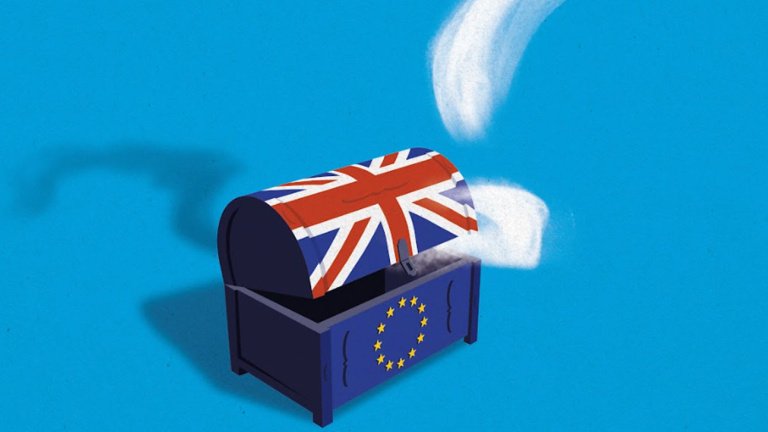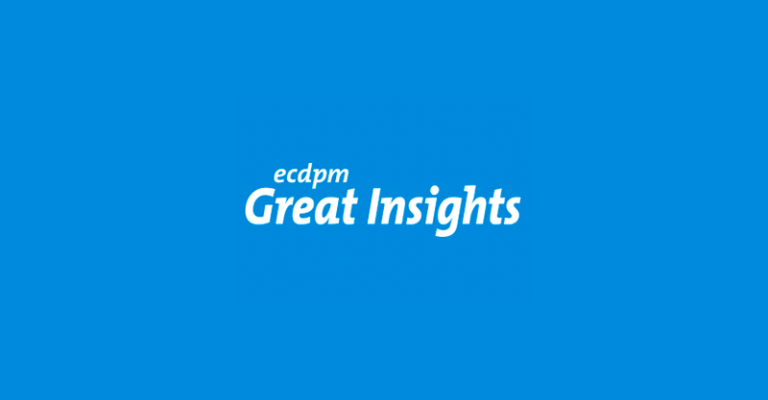
Europe’s gender action beyond Brexit
The UK has played an influential role in EU gender and development policy, including the second Gender Action Plan on Gender Equality and Women’s Empowerment (GAP II). Is the institutional cultural shift promised by GAP II strong enough to keep gender high on the EU development agenda post-Brexit? There is a growing sense that GAP II has gained enough institutional momentum to continue regardless.
The EU has long been committed to gender equality as a fundamental value and to gender mainstreaming. The Cotonou Agreement (2000/483/EC), which has governed relations between the EU and the 79 African, Caribbean, and Pacific (ACP) countries, states, ‘Systematic account shall be taken of the situation of women and gender issues in all areas – political, economic and social’ (Article 1). The 2005 Consensus on Development reiterates, ‘The EU will include a strong gender component in all its policies and practices in its relations with developing countries’ (European Commission, 2006). This broad objective was fleshed out in the European Commission’s (2007) communication ‘Gender Equality and Women’s Empowerment in Development Cooperation’.
While important, these rhetorical commitments lacked a plan of action to translate them into practice. The 2010 ‘Action Plan on Gender Equality and Women’s Empowerment’ (the Gender Action Plan, or GAP) aimed to do precisely this (European Commission, 2010). It emphasised a three-pronged approach: mainstreaming gender in all development activities, continuing to support interventions targeted specifically at women and girls, and introducing gender equality and women’s empowerment into political dialogue. However, the GAP had limited success. Evaluations criticised the gulf between the EU’s commitment to gender equality and its internal capacity to implement it (Watkins et al., 2015; O’Connell, 2013). The second GAP, adopted by the Council in October 2015, aims to address this and other failings (European Commission and High Representative, 2015).
GAP II has four priorities, three thematic and one crosscutting. The three thematic priorities are
● ensuring girls’ and women’s physical and psychological integrity,
● promoting economic and social rights and empowerment of girls and women, and
● strengthening girls’ and women’s voice and participation.
The crosscutting priority is institutional, and presented as a precondition for achieving the other three:
● shifting Commission services and the institutional culture of the European External Action Service (EEAS) to more effectively deliver on EU commitments.
This includes increasing the number of women heads of delegation, boosting gender expertise within the EU institutions and delegations, and increasing the number of programmes and projects in which gender equality is a principal or significant objective.
The UK and GAP II
The UK has been active in GAP II’s development, particularly in ensuring a strong focus on results and on the EU institutions’ internal workings and culture. The UK was a leading voice in the Council, along with a number of like-minded countries, in support of the inclusion of sexual and reproductive health and rights in both GAP II and the European Consensus on Development. This required significant effort, as opposition was raised. Numerous UK national experts have been seconded to EEAS and the delegations, and UK civil society leaders have contributed vital expertise.
The UK’s International Development (Gender Equality) Act 2014, which introduced a duty to have regard for gender inequality and report on efforts to remedy it and to advance women’s empowerment, is seen as an example of best practice (European Commission and High Representative, 2017). DFID’s (2018) Strategic Vision for Women and Girls provides further evidence of the UK’s commitment to gender and development, although the UK does not go as far as Sweden, which has produced a feminist foreign policy (Government Offices of Sweden, 2018). The UK has also provided leadership on sexual violence in conflict. At the UN level, the UK and EU have supported each other’s work around gender, for example, in the adoption of Resolution 2242 (2015) on the role of women in countering violent extremism.
The budget and GAP II
GAP II encourages the EU and its member states to increase the proportion of ODA directed towards programmes with a gender component. Yet, with a reduced budget following Brexit, there is concern about the ability to maintain GAP II’s implementation. Is the envisioned institutional cultural shift already sufficiently anchored to keep gender on the agenda when resources are scarce?
GAP II does not promise extra resources. It states, ‘Commission Services and EEAS… will work towards ensuring adequate financial and human resources’ (European Commission and High Representative, 2015, para. B). This is to be done in several ways: through improved partnership and coordination, including, potentially, the private sector; by closely monitoring external relations’ resource and budget allocations to gender; and by ‘identifying means of ensuring adequate financial support’. The emphasis is on ‘more effective and efficient use of resources’ (ibid., p. 13). Resource allocation for GAP II implementation is now an important question, as member states are negotiating the next multiannual financial framework (MFF) . A funding gap left by the UK’s withdrawal could make this process more difficult.
Brexit is already having a direct financial impact on UK aid recipients. The fall in the pound’s value following the 2016 referendum has reduced the amount of money available to UK civil society organisations (CSOs), including those working on gender equality and women’s empowerment. UK CSOs will be further affected by their loss of EU funding (Bond, 2017, p. 6). This will impact CSOs working on HIV/AIDS, reproductive health, and family planning, and their development partners. Although some actors in the Commission and EEAS have demonstrated strong commitment to gender equality and women’s empowerment, gender is not necessarily perceived by all as a top priority. When resources are scarce, gender tends to be pushed down the agenda, treated as a luxury affordable only in times of plenty. GAP II seeks to ensure full institutionalisation of action favouring gender equality and women’s empowerment, thus providing a buffer against political and financial change.
Brexit and GAP II
There is a sense in the EU institutions that the UK will be missed as a gender and development partner. However, GAP II seems to have gained sufficient institutional momentum to continue regardless of the UK’s contribution. There is currently strong political leadership for GAP II, including Development Commissioner Neven Mimica and High Representative Federica Mogherini. Mimica, for example, declared in 2015 that he would be ‘the most vocal male feminist’ in the College of Commissioners. ‘Gender is definitely a priority’, he said, ‘and this will be ever more visible in our concrete development actions’ (Gotev, 2018).
Questions remain on future UK cooperation with the EU and like-minded member states on gender and development. The EU and OECD encourage coordination of aid activities, as a way to improve aid effectiveness. In some countries, for example, Ghana, the UK is working with EU institutions, EU member states, and other countries, such as Norway and Switzerland, through joint programming. There is potential here for continued cooperation and sharing of expertise. In addition, the UK is active in the DAC Network on Gender Equality (GENDERNET). According to Bond (2017), UK CSOs want to continue to have a voice, to cooperate with European civil society networks, and to ensure that Brexit does not disadvantage the partners they work with in the global South (Bond, 2017, p. 4).
The future of GAP II will be influenced by factors other than Brexit as well. The broader political and institutional context, including the new Commission, European Parliament, and MFF, will likely have more influence than Brexit on the EU’s commitment to gender equality and women’s empowerment and on its success towards these goals. Moreover, the (gendered) impact of EU development policy depends on more than just GAP II (Allwood, Guerrina, and MacRae, 2013). Trade, migration, and climate change are examples of UK and EU policy areas that are insufficiently gender mainstreamed and which have significant gendered impact (Allwood, 2014, 2015). Trade policy affects women and men differently due to structural inequalities, such as the unequal division of unpaid care work and women’s limited access to and control over resources (European Parliament, 2018, para B). Trade liberalisation can increase gender pay gaps (ibid., para 15). In its 2018 Report on Gender Equality in EU Trade Agreements, the European Parliament called for all necessary measures to be taken to promote gender equality and women’s empowerment in trade.
Conclusion
Development NGOs are working hard to ensure that Brexit does not adversely affect developing countries and the people living in them. However, Brexit is not the main focus of their concerns surrounding gender equality and women’s empowerment. Here, they are working to ensure that GAP II continues to be effectively implemented, that gender budgeting guides formulation of the MFF, that gender equality is considered in EU trade relations, and that civil society in Europe and in partner countries has the capacity to work with the EU and hold it accountable.
References
Allwood, G. (2014), ‘Gender mainstreaming and EU climate change policy’, European Integration Online Papers, Special Issue 1, 18.
Allwood, G. (2015), ‘Horizontal policy coordination and gender mainstreaming: The case of the European Union’s global approach to migration and mobility’, Women’s Studies International Forum 48, doi: 10.1016/j.wsif.2014.10.004.
Allwood, G., R. Guerrina, and H. MacRae (2013), ‘Unintended consequences of EU policies: Reintegrating gender in European studies’, Women’s Studies International Forum 39, doi: 10.1016/j.wsif.2013.05.001.
Bond (2017),The impact of Brexit on UK and EU international development and humanitarian policy: Views from UK and European civil society. London: Bond.
Cotonou Agreement (2000/483/EC), Partnership agreement between the members of the African, Caribbean and Pacific group of states of the one part, and the European Community and its member states, of the other part, Protocols. Final act.
DFID (2018), DFID strategic vision for gender equality: A call to action for her potential, our future. London: Department for International Development.
European Commission (2006), The European consensus on development. Brussels: European Commission.
European Commission (2007), Communication from the Commission to the European Parliament and the Council: Gender equality and women’s empowerment in development cooperation. Brussels: European Commission.
European Commission (2010), EU plan of action on gender equality and women’s empowerment in development cooperation, SEC(2010)265 Final. Brussels: European Commission.
European Commission and High Representative of the Union for Foreign Affairs and Security Policy (2015), Gender equality and women’s empowerment: Transforming the lives of girls and women through EU external relations 2016-2020, SWD(2015) 182 Final. Brussels: European Commission.
European Commission and High Representative of the Union for Foreign Affairs and Security Policy (2017), Gender equality and women’s empowerment: Transforming the lives of girls and women through EU external relations 2016-2020. Annual implementation report, 2016. SWD(17)288. Brussels: European Commission.
European Parliament (2018), Report on gender equality in EU trade agreements, 2017/2015(INI), Paragraph B.
Gotev, Georgi (2018), ‘Mimica: “I will be the most vocal male feminist”’, EurActiv.com.
Government Offices of Sweden (2018), Feminist foreign policy.
O’Connell, Helen (2013), Implementing the European Union Gender Action Plan 2010-2015: Challenges and opportunities. London: Overseas Development Institute.
Watkins, Francis et al. (2015), Evaluation of EU support to gender equality and women’s empowerment in partner countries. Brussels: European Commission.
About the author
Gill Allwood is professor in the School of Arts and Humanities of Nottingham Trent University.
Read the full magazine issue






